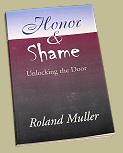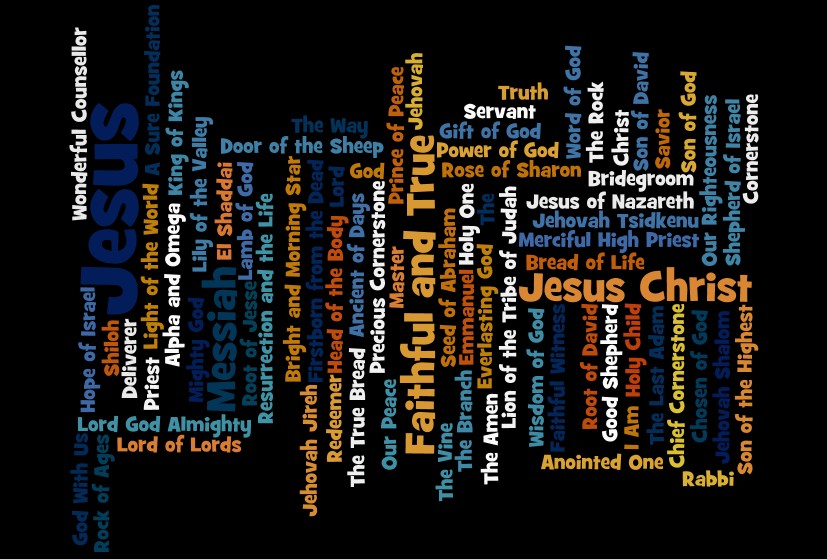Three Views: Post-millennial, A-millennial, and Pre-millennial:
The word millennium simply refers to a thousand years. When will Jesus reign and how will Jesus reign? These views seek to answer those questions. Not everyone agrees over the nature or time of the millennium. Not all are convinced of a future millennial reign at all. Since the Ascension of Christ various views have emerged. This vacillation will no doubt continue as the landscape of time and history changes. Certain climactic views on earth might cause one to reconsider his or her views.
Postmillenialism is comparatively recent in origin.[7] Daniel Whitby and A.A. Hodge are some of the most notable men who hold this view. This view would suggest that we are fulfilling the Great Commission (Matthew 28:19) and that a kingdom of heaven, on earth, is flowering and coming to fruition today. They would point to the Parable of the Mustard Seed (See Matthew 24) and certain other parables; the successes of the Church in history are evidence as well. For the postmillennialist Christ will come after the millennium. Dr. Ed Hindson notes that “those who hold to this perspective believe that the world will continue to get better and better until the entire world is Christianized”[8]
The postmillennial view would see Revelation 20:6 as looking back on history. The binding of Satan did not render him in active but only operating in a limited capacity. The millennium is at the end of history that sees the Reign of Christ. Some see the Reign of Christ as literal and yet others see it as spiritual. Amillennialism, meaning no millennium, would suggest a spiritual or allegorical interpretation of the relevant texts. The millennium then is spiritual. St. Augustine is the popular founder of this view in his book, The City of God. In this work he reframed Christian understanding to believe that the church age was indeed the thousand year reign. William Hendriksen is another notable scholar who holds to this view. Adherents to this view also sees the spiritual kingdom being fulfilled now in a spiritual sense—on earth or in heaven.
Post-millennialists are highly optimisitic and maybe for good reason. That is yet to be decided. This view interprets the parable of the mustard seed (Matthew 13:31-33) to support this understanding. This parable does not inform us as to the extent to which the Kingdom would grow analogous to the seed. Some parts of the world are experiencing a revival of the Gospel. Yet the world is also increasingly becoming evil. Passages such as Matthew 7:13-14, 24:21-30; Luke 18:8; 2 Thessalonians 2:3-4; 2 Timothy 3:1-5, 12-13; 4:3-4 are used to reject this view.
This view would also use Matthew 24 to support their view. Mainly interpreting verses from this chapter as being fulfilled by the destruction of Jerusalem in A.D. 70 by the Roman armies led by Titus. While this even can be called a coming of the Lord in judgment at the same time it is clear that the predictions of a still future and personal return of the Lord. Appealing to imagery or symbolisms found in Ezekiel 32:7; Joel 2:10; Amos 8:9; Isaiah 13:10, 34:4. In Matthew 24:29 the sun is darkened, the moon reflects no light, stars fall from heaven and the heavens are shaken. The first three prophets refer to judgments which include darkness. The magnitude of phenomena and power demanded by Matthew 24:29 are not found in those prophets. The Isaiah texts can be understood to refer to seeming cosmic events having fulfillment in a final judgment scenario.
During the Olivet discourse in Matthew 24 Christ is addressing His disciples and warning them of persecution and tribulation to come. The Disciples then could also be representative of the church. Perhaps the most explicit denial of the post-millenial view here is Matthew 24:30, “…They will see the Son of Man coming on the clouds of the sky, with power and great glory.” (NIV) Interpreting Mattthew 24 in light of Jews in tribulation or a future Jewish kingdom seems more difficult than understanding it in light of the Church.
To the amillenialist heaven follows the Second Coming of Christ, not a literal millennial kingdom. For the amillennialist Satan was bound during the earthly ministry of Jesus (See Matthew 12:29; Luke 10:18; John 12:31). During this church age Christ is reigning from heaven and Satan is actually limited in that he cannot completely stop the spread of the Gospel. This view does not seem to do complete justice to passages such as the binding of Satan in Revelation 20:6.
The Duration of the Millennium:
The actual duration is perhaps the most debated aspect of this passage. Does 1,000 mean 1,000 in this passage or is it referring to a symbolic or long period of time? Revelation 20:6 is the only verse which actually highlights the length of the Reign of Christ. This is not the only verse however that refers to His Messianic Kingdom. Perhaps that presupposition should be held suspect until ruled out further. Should the Scriptures have to say something more than once to be true? In Genesis 11 the Tower of Babel is only referred to once but its existence and what happened there is considered to be true. In a recent tome Mark Hitchcock lists the following ten verses as being “ten of the most important Old Testament passages on the coming kingdom.” They are as follows: Isaiah 2:1-5, 11:1-16, 32:1-20, 35:1-20, 60:1-22; Jeremiah 31:1-40, 33:1-26; Ezekiel 37:14-28; Amos 9:11-15; Zechariah 14:6-21.
The premillennial view would attempt to take Revelations 20:6 as literal as the context allows and demands. The words for a thousand years appear six times in Revelations 20 verses 1-7. In this instance it would refer to a period of time in which Christ reigns and Satan is not only limited but unable to deceive or influence the nations. Passages such as Luke 22:3; John 16:11; Acts 5:3; 2 Corinthians 4:3-4; 11:14; Ephesians 2:2; 1 Thessalonians 2:18; 2 Timothy 2:26 and 1 Peter 5:8 seem to support the New Testament belief that Satan is active on earth during the present time. In John 16:11 he is the ruler of this world; in Ephesians 2:2 the prince of the power of the air; in 2 Corinthians 4:4 the god of this age and in 1 Peter 5:8 a roaring lion seeking someone to devour.
It is obvious from the preceding Scriptures that Satan is not bound in our present time. As the world exhibits goodness and some virtue it is also increasingly becoming evil. If the millennium is here and now then what of the present evil or dark spiritual influence today? Some opponents of a future millennium suggest that Satan is literally bound and sealed away yet to explain the presence of evil today it is explained that his demons are still active. For example, if a leader of organized crime was sealed away from society his followers, still persuaded of the same objectives, could still inflict crimes or evil against humanity. Yet, even the demons know of an impending doom. In Matthew 8:29 we read, “What do you want with us, Son of God?” they shouted. “Have you come here to torture us before the appointed time?”
Church History:
“It is generally agreed that the view of the church for the centuries immediately following the Apostolic era was the premillennial view of the return of Christ.”[9] In his Systematic TheologyRobert Culver states: “It is not surprising therefore that chiliasm (belief in the thousand-year reign) was widely spread, if not universal, in the first three centuries.”[10] Phillip Schaff, in his voluminous History of the Christian Church writes:
“The most striking point in the eschatology of the ante-Nicene age is the prominent chiliasm, or millennarianism, that is the belief of a visible reign of Christ in glory on earth with the risen saints for a thousand years, before the general resurrection and judgment. It was indeed not the doctrine of the church embodied in any creed or form of devotion, but a widely current opinion of distinguished teachers, such as Barnabas, Papias, Justin Martyr, Irenaeus, Tertullian, Methodius, and Lactantius; while Caius, Origen, Dionysius the Great, Eusebius (as afterwards Jerome and Augustine) opposed it.”[11]
Here Schaff, who was not a proponent of premillenialism, cites men such as Barnabas, Papias, Justin, and Irenaeus as early teachers of that very view. Not long after Romish doctrines began to take root in the primitive church amillenarianism became popular. It seemed the hope of Christ’s return where man rule and reigned with Christ was misplaced. At this point amilleniarianism began to ascend and eclipse premillenialism. In the post-Reformation era however postmillennialism began its rise. Postmillennialism would lose its luster during WWII.
Systematic theologian Henry C. Thiessen suggested that “From the 4th Century on, the belief in the millennium declined.”[12] New Testament scholar Ben Witherington suggests, "The vast majority of early Christian writers who commented on the matter did indeed understand Revelation 20 and texts like 1 Corinthians 15 to refer to a reign of Christ on the earth prior to the end, prior to the final judgment and the new heaven and the new earth. We may thank figures like Eusebius of Caesarea (ca. 263–339) and Augustine of Hippo (354–430) many centuries after the time of the New Testament writers for changing the way such texts were read."(13)
It is obvious from the preceding Scriptures that Satan is not bound in our present time. As the world exhibits goodness and some virtue it is also increasingly becoming evil. If the millennium is here and now then what of the present evil or dark spiritual influence today? Some opponents of a future millennium suggest that Satan is literally bound and sealed away yet to explain the presence of evil today it is explained that his demons are still active. For example, if a leader of organized crime was sealed away from society his followers, still persuaded of the same objectives, could still inflict crimes or evil against humanity. Yet, even the demons know of an impending doom. In Matthew 8:29 we read, “What do you want with us, Son of God?” they shouted. “Have you come here to torture us before the appointed time?”
Church History:
“It is generally agreed that the view of the church for the centuries immediately following the Apostolic era was the premillennial view of the return of Christ.”[9] In his Systematic TheologyRobert Culver states: “It is not surprising therefore that chiliasm (belief in the thousand-year reign) was widely spread, if not universal, in the first three centuries.”[10] Phillip Schaff, in his voluminous History of the Christian Church writes:
“The most striking point in the eschatology of the ante-Nicene age is the prominent chiliasm, or millennarianism, that is the belief of a visible reign of Christ in glory on earth with the risen saints for a thousand years, before the general resurrection and judgment. It was indeed not the doctrine of the church embodied in any creed or form of devotion, but a widely current opinion of distinguished teachers, such as Barnabas, Papias, Justin Martyr, Irenaeus, Tertullian, Methodius, and Lactantius; while Caius, Origen, Dionysius the Great, Eusebius (as afterwards Jerome and Augustine) opposed it.”[11]
Here Schaff, who was not a proponent of premillenialism, cites men such as Barnabas, Papias, Justin, and Irenaeus as early teachers of that very view. Not long after Romish doctrines began to take root in the primitive church amillenarianism became popular. It seemed the hope of Christ’s return where man rule and reigned with Christ was misplaced. At this point amilleniarianism began to ascend and eclipse premillenialism. In the post-Reformation era however postmillennialism began its rise. Postmillennialism would lose its luster during WWII.
Systematic theologian Henry C. Thiessen suggested that “From the 4th Century on, the belief in the millennium declined.”[12] New Testament scholar Ben Witherington suggests, "The vast majority of early Christian writers who commented on the matter did indeed understand Revelation 20 and texts like 1 Corinthians 15 to refer to a reign of Christ on the earth prior to the end, prior to the final judgment and the new heaven and the new earth. We may thank figures like Eusebius of Caesarea (ca. 263–339) and Augustine of Hippo (354–430) many centuries after the time of the New Testament writers for changing the way such texts were read."(13)
Thiessen goes on to say there are several reasons for this decline but lists three. They are summarized as the following: 1) the persecutions against the church drew to an end after the conversion of Constantine. 2) A change in Biblical interpretation from literal hermeneutic to the allegorical method. Biblical predictions became spiritualized. 3) Many began to interpret the binding of Satan and the resurrection and reign of the saints as the personal victory of believers over Satan.
Conclusion:
Using a literal method of interpretation one cannot deny that the Second Coming of Christ is both literal and accompanied by a millennial reign. It is the place, nature, and timing of these events that believers have debated for some time. At the moment, this writer holds to the historic premillennial view which sees believers continuing until a future or perhaps present tribulation until Satan is bound and Christ returns to earth to establish the millennial kingdom.
A literal reading of Revelations 20 should produce a premillenial view. Other views will have to spiritualize this unit of text in order for it to make sense otherwise. Unlike the present condition of earth, which is full of confusion and mounting evil, Christ will usher in a “golden era of peace and prosperity”[14] This Reign of Christ will be marked by allegiance and devotion to Him alone. As a result of Christ’s reign joy, peace, healing, protection, and justice will flourish. In his work The Last Things: Resurrection, Judgement, Glory Bloesch rightly warns premillennialist. He suggests:
“In addition an egocentric strand runs through premillennialism. The Christian goal sometimes appears to be experiencing the pleasures of the millennium rather than glorifying God in lowly service. Our service to the world should be fueled by hope in the second advent of Christ, but this hope should turn us ever more to the world in its poverty and misery rather than away from the world toward an idyllic kingdom that lies on the other side of history.”[15]
Christians must not just sit by idle and complacent as though we must wait to experience pleasure and life in Christ only in the Millennium. The Kingdom of God has come and is coming. Jesus Christ does reign in our hearts and has come and will come again but this does not mean believers must simply wait and do nothing. We should fuel and not stifle our "service to the world" by this "hope"(Titus 2:13). It is all the more reason to do something for the Kingdom now or as Bloesch says, “on this side of history.”
NOTES:
7 Culver, Robert D. Systematic Theology © 2005 by Robert Duncan Culver. All rights reserved.
8 Hindson, Ed. Et al. The Popular Encyclopedia of Bible Prophecy (p. 234). © 2004 by Tim Lahaye and Ed Hindson
9 Pentecost, J. Dwight. Things to Come (p. 373). © 1958 by Dunham Publishing Co. Zondervan
10 Culver, Robert D. Systematic Theology © 2005 by Robert Duncan Culver. All rights reserved.
11 Schaff, P., & Schaff, D. S. (1997). History of the Christian church. Oak Harbor, WA: Logos Research Systems, Inc.
12 Thiessen, Henry C. (1949) Lectures in Systematic Theology. Grand Rapids, Mi: Wm. B. Eerdmans Publishing Company (366)
13 Witherington, Ben Revelation and the End Times : Unraveling God’s Message of Hope (Kindle Locations 1273-1275). Abingdon Press. Kindle Edition.
14 Hindson, Ed. The Book of Revelation: Unlocking the Future (p. 200). Twenty-First Century Commentary Series © 2002 by Tyndale Theological Seminary
15 Donald G. Bloesch, The Last Things: Resurrection, Judgment, Glory (Downers Grove, IL: InterVarsity Press, 2004). 89.







